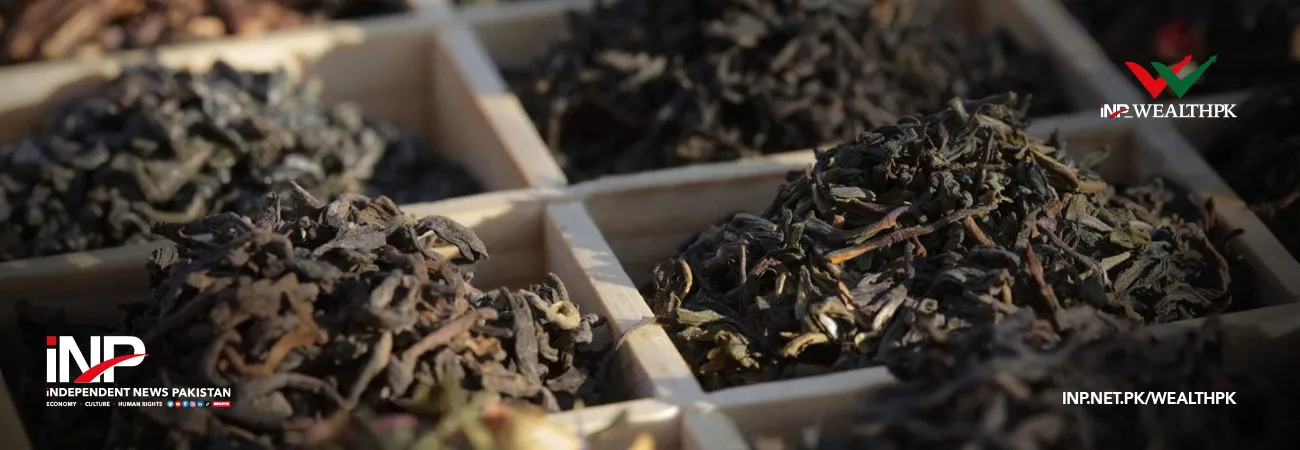INP-WealthPk
Azeem Ahmed Khan
Intensifying climate change poses an existential threat to Pakistan, even though the country contributes only a minimal share to global greenhouse gas emissions, said the Pakistan Economic Survey 2024-25.

Pakistan remains among the world’s most climate-vulnerable nations, with an increasing frequency and intensity of extreme weather events, rising temperatures, and erratic rainfall patterns, the survey said. Though Pakistan contributes less than 1% to the global emissions, it ranks first among the top 10 countries most affected by climate change, according to the Climate Risk Index 2022, the survey mentioned.
The index, based on a 30-year evaluation from 1993 through 2022, underscores Pakistan’s repeated exposure to severe weather events. The survey noted that Pakistan is now experiencing a ‘new normal’ of frequent and intense extreme weather phenomena, whose duration and impact are steadily growing due to climate change.
The country’s geographical characteristics - being bordered by glacier-laden mountain ranges and warmed by the Arabian Sea - further amplify its susceptibility to floods, droughts, and Glacial Lake Outburst Floods (GLOFs). Pakistan stands as a stark illustration of intensifying climate risks, the survey said. In 2022, the country endured the most expensive flood disaster in global history, triggered by record monsoon rainfall and GLOFs between June and September.
These floods impacted over 33 million people, claimed over 1,700 lives, and caused damages estimated at nearly $15 billion. The catastrophe followed a deadly heatwave (March-May 2022) with peak temperatures reaching 49.5°C, contributing to the already fragile environmental conditions. The survey stressed that Pakistan is facing the devastating consequences of climate change largely driven by emissions from major industrialized countries.
The report underlined that climate change is now an urgent reality, not a distant threat, demanding both global emissions reductions and strengthened local adaptive strategies. Highlighting the call of the United Nations Sustainable Development Goals (SDGs), the survey emphasized that climate action is closely tied to financing and nationally determined contributions, both of which are crucial for mitigating disaster risks.
Pakistan is responding to these challenges through initiatives such as the National Adaptation Plan and the Recharge Pakistan Project. The survey also warned that global warming is advancing more rapidly than previously projected, with the planet nearing the +1.5°C threshold sooner than anticipated.
In this context, 2024 emerged as the hottest year on record, featuring the hottest day on July 22 and the first year with an average global temperature above 1.5°C, disproportionately affecting vulnerable populations like those in Pakistan. Mentioning the historical natural disasters between 1980 and 2024, the survey said, Pakistan experienced 224 major natural disasters.
Floods emerged as the most devastating, inflicting substantial economic losses and affecting millions. Extreme heatwaves, increasingly deadly, have caused 2,741 fatalities across 13 events. Though fewer in number, tropical cyclones resulted in over $1.7 billion in damages. Droughts, with two recorded events, have severely impacted over 6.9 million people and caused damages worth $247 million, significantly harming the country’s agriculture-dependent economy.
The China-Pakistan Economic Corridor (CPEC) offers an unmatched opportunity for economic advancement and regional connectivity, the survey noted. However, it emphasized the necessity of embedding environmental sustainability, climate resilience, and green growth into the next phase of CPEC. As part of CPEC Phase II, establishment of a "Green Corridor" has been proposed, aimed at incorporating eco-friendly practices across transport, agriculture, forestry, energy, water, and industrial development, aligned with Pakistan’s climate and sustainability goals.
The key objectives include building sustainable transport systems to lower carbon emissions and promote green economic growth; advancing joint forestry efforts to boost forest cover, protect biodiversity, and enhance resilience; promoting climate-smart agriculture and sustainable water management for food and water security, and encouraging the development of green energy and cleaner industries to reduce emissions and create green jobs.
Explaining the state of Pakistan’s climate last year, the survey said, the year 2024 was marked by intense climate anomalies, including extreme heat and unpredictable rainfall, reflecting Pakistan’s deepening climate vulnerability. The national rainfall totaled 390mm, 31% above the norm, while the average annual temperature rose to 23.52°C, 0.71°C higher than usual.
The Pakistan Meteorological Department identified Sindh and Balochistan as the most climate-affected provinces. Sindh saw a 94% increase in rainfall and the hottest day of the year at 52.5°C in Mohenjo-Daro on May 26. Jacobabad was the warmest location with an average of 46.3°C in May, while Tropical Cyclone ASNA impacted the region from August 30 to September 2, the survey said.
Balochistan, despite an increase of 82% in rainfall, recorded Nokandi as the driest place with just 45mm rain annually. Sibbi experienced the warmest night of the year at 36°C (May 28–29), and Turbat reached a high of 36.1°C. Punjab experienced an increase of 18% in rainfall, recording the wettest day (337mm) and month (603mm) in Lahore during August. Khyber Pakhtunkhwa recorded 4% rainfall increase and the coldest day of the year in Malam Jabba (-2.0°C on February 19).
Meanwhile, Northern Areas saw reduced precipitation, with Gilgit-Baltistan and Azad Jammu and Kashmir (AJK) experiencing 12% and 13% less rainfall, respectively. Despite the overall decline in precipitation in the north, Malam Jabba in AJK emerged as the wettest location with 1,789mm annual rainfall. Gilgit-Baltistan saw extreme cold with Kalam hitting -14°C and February averaging 8.6°C.
In total, Pakistan's national rainfall in 2024 was 390mm - 31% higher than the 1961–2010 long-term average of 297.6 mm - making it the 7th wettest year in the last 64 years. The all-time record remains 526.9 mm, set in 2022.
Credit: INP-WealthPk













